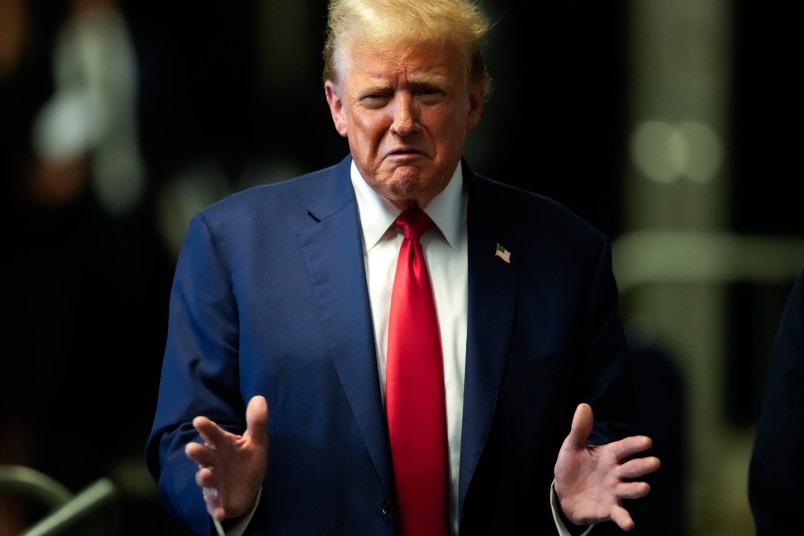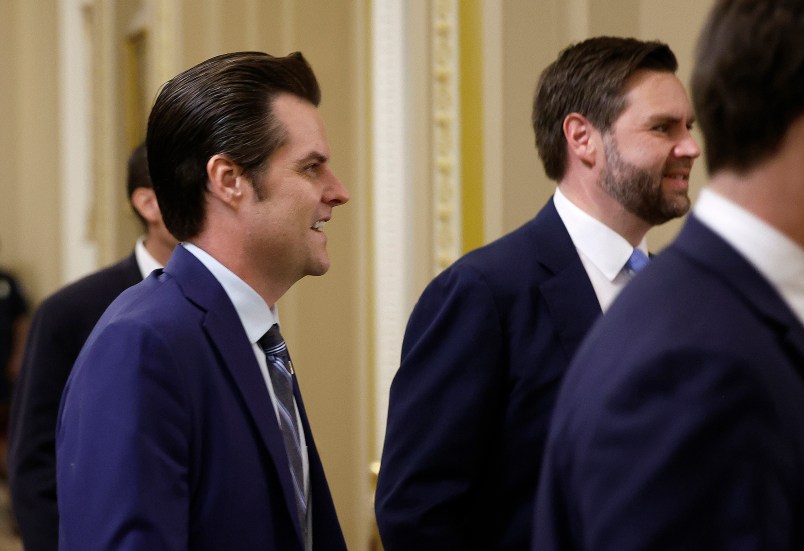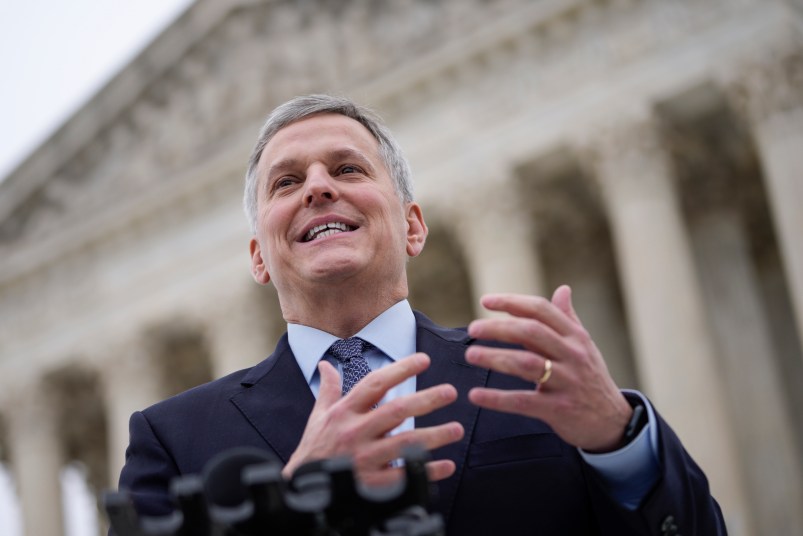WASHINGTON (AP) — Win or lose — and they’ll probably lose — Democrats hope this week’s Senate showdown over raising the federal minimum wage reaps them benefits in November’s congressional elections.
Whether they’ll get an Election Day payoff is uncertain.
In a Senate vote expected Wednesday, Republicans seem likely to block the Democratic measure, which would gradually raise today’s $7.25 hourly minimum, reaching $10.10 as soon as 2016. Even if the bill, one of President Barack Obama’s top priorities, somehow survives in the Senate, it stands little chance of even getting a vote in the GOP-run House.
Who would the proposal most directly affect? According to the Bureau of Labor Statistics, women and young people make up disproportionate portions of the 3.3 million people who earned $7.25 or less last year. Both groups traditionally skew Democratic, and the party would love to drive them to the polls in November as it battles to retain Senate control.
“It’s a powerful values issue for middle-class voters,” Democratic pollster Geoffrey Garin said of the minimum wage push. “And it’s a powerful motivator for voters in the Democratic base who are a focal point of Democratic efforts to turn out voters in the midterm elections.”
For Senate Republicans, there is little political incentive to support the measure.
The increase is opposed by the GOP’s business allies, and Republican lawmakers say boosting the minimum wage would drive up employers’ costs. They’ve been buttressing that argument with a February study by the nonpartisan Congressional Budget Office, which estimated the $10.10 increase would eliminate around 500,000 jobs — though it also concluded that earnings would rise for at least 16.5 million low-paid workers.
Republican voters also give GOP lawmakers scant reason to back the increase.
An Associated Press-GfK Poll in January found that while the public supports a minimum wage increase by 55 percent to 21 percent, Republicans oppose it by 39 percent to 32 percent. For tea party voters — who GOP senators hope will vote in large numbers this November — the gap is 43 percent against an increase and 28 percent for it.
To counter Democratic arguments that the GOP is out of touch with today’s harsh economic realities, Republicans say the priority should be finding ways to create jobs, not erase them, such as by reducing taxes on companies.
“You can try to wave a magic wand and artificially” increase wages, said Republican pollster David Winston. Instead, he said, the GOP is reaching out to voters “who’d like to be earning more money and really think the economy needs to be turned around.”
Key constituencies oppose compromising on a lower figure, including the AFL-CIO, which backs an increase, and the National Federation of Independent Business, which opposes one. That makes a bipartisan deal even less likely, at least before the elections.
That means the battle will probably produce little more than fodder for campaign advertising. Both sides’ lobbying reflects the low odds of a law being enacted, with scant advertising and few signs of all-out campaigns that typify major Washington battles.
“It’s really a matter of just making sure there are no surprises in what we view as a political vote,” said Rob Green, executive director of the National Council of Chain Restaurants, a leading foe of the proposed increase.
The pressure for congressional action is further reduced by the states — 21 have minimum wages above $7.25. Five have enacted increases so far in 2014, and 29 others are considering boosts. By law, workers covered by both the federal and a state’s minimum wage are entitled to the higher amount.
For Democrats, the minimum wage is the latest attempt to rouse traditional party supporters with Senate votes this election season.
They won passage of a measure this month extending expired benefits for the long-term unemployed, though it faces tough odds in the House. GOP senators thwarted another bill aimed at narrowing the pay gap between men and women.
Women account for more than 6 in 10 people earning the current minimum wage or less.
In midterm elections since the 1970s, exit polls of voters show women have tilted toward Democratic congressional candidates by an average of 7 percentage points. But in a cautionary note to Democrats, that’s not set in concrete: Women split about evenly in 2010, when Republicans took over the House.
Nearly half of people earning minimum wage or less are under age 25, even though they represent just a fifth of people working for hourly pay.
Younger voters have leaned toward Democrats by an average 7 percentage points since the 1970s. The margin has been even greater since 2004, when their preference for Democrats has been by double-digit percentage points.
Young people, however, aren’t stalwart voters in midterm elections. They have averaged just 6 percent of voters in those elections, compared to the 10 percent of the overall population that 18- to 24-year-olds represent.
The bill by Sen. Tom Harkin, D-Iowa, would raise the federal minimum to $8.20 six months after enactment, $9.15 after an additional year and $10.10 a year after that. The minimum would then automatically increase annually with inflation.
It would also gradually boost the $2.13 minimum for tipped workers like waiters to 70 percent of the full minimum wage.
___
Associated Press Director of Polling Jennifer Agiesta and AP News Survey Specialist Dennis Junius contributed to this report.










